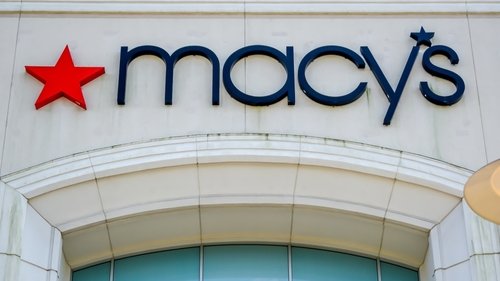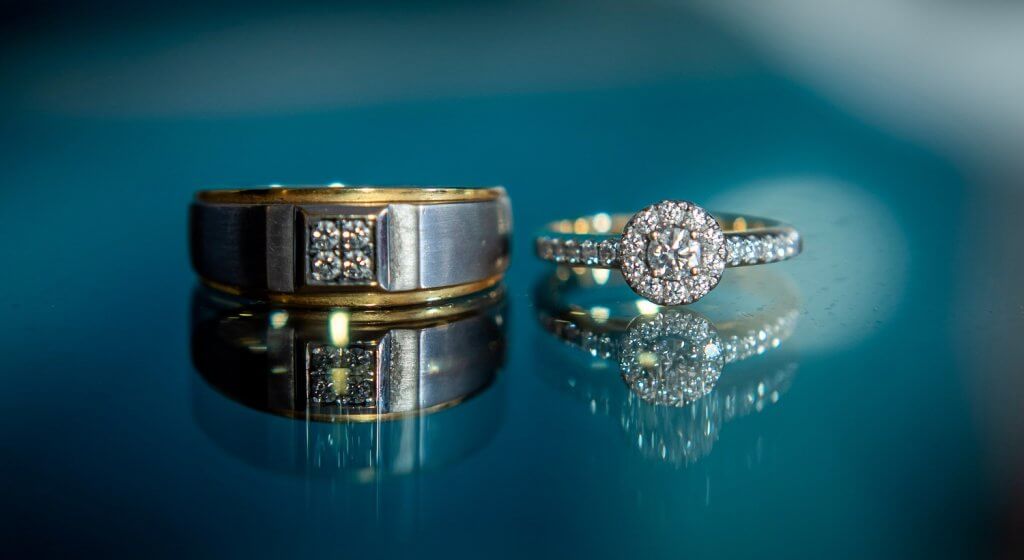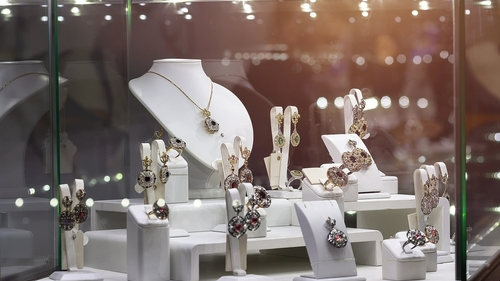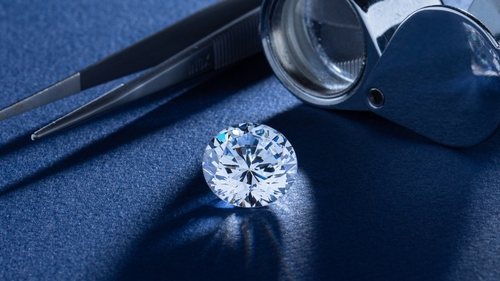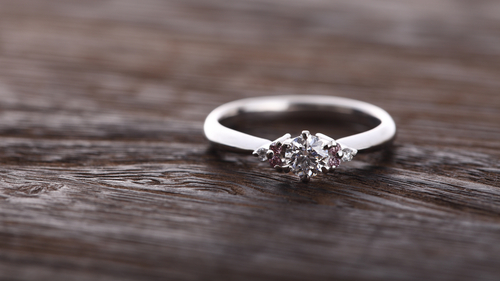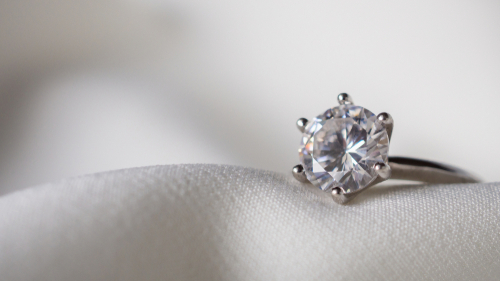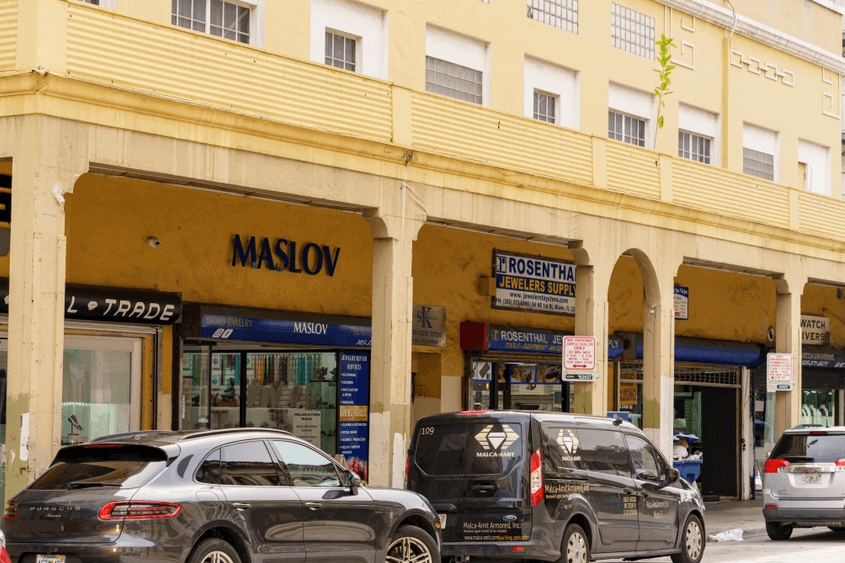Unlocking the Secrets of Hatton Garden: London’s Dazzling Jewelry Haven!
Unlock the secrets of Hatton Garden and master the art of choosing the perfect diamond engagement ring in this ultimate guide to sparkling proposals.

What we’ll cover in this guide:
- Chapter 1: The Legacy of Hatton Gardens London Jewelers
- Chapter 2: Diamond 101 – Mastering the 4Cs
- Chapter 3: Understanding Pricing and Value
- Chapter 4: Navigating Hatton Garden: Tips and Tricks
- Chapter 5: Proposal Ideas Inspired by Hatton Garden
- Conclusion
- 10 Frequently Asked Questions about Hatton Gardens London Jewelers
- Buying Guide: 7 Practical Tips for Browsing Hatton Garden Jewelers
We love London. Who doesn’t? Vibrant, eclectic, colorful, luxurious…the city has everything to offer, even if you’re only passing through on the way to someplace further flung.
But there’s one spot in particular that we love more than any other: Hatton Garden. A small(ish) pocket within the larger borough (pronounced ‘buh-ruh’ in the UK) of Camden, Hatton Garden has represented London’s fine jewelry hub for hundreds of years.
So, if you’re in the city and in the market for a diamond? You’re also in for a treat. Hatton Garden is powered by masters at work, from second- and third-generation jewelers to diamond and gemstone experts.
Chapter 1: The Legacy of Hatton Gardens London Jewelers
You don’t just go to Hatton Garden to buy a pretty piece of jewelry. You go for the history, the vibe, the lifelong memories and the pleasure of being part of a long legacy of shoppers…
A Brief History
Hatton Garden became known as a diamond and fine jewelry hub back in the 19th century, although jewelry makers had been putting down roots in this particular part of the city as early as the medieval era. Back then, it was commonplace for similar businesses to group together, as it simplified trade and stopped the city from getting too overwhelmed by the growing list of industries.
Since that point, Hatton Garden has represented a busy, flourishing, dynamic part of London. It’s not as overrun by jewelry stores as the New York Diamond District, but you won’t run out of stores – there are more than 90 stores, some of which have long histories behind them.
Why Hatton Garden Stands Out
In part, Hatton Garden’s legendary status stems from its background. The area is interwoven with most of London’s long and fabled history, and a lot of people go there just to soak up that feeling of being on a street that, despite changing appearances, has remained largely the same for hundreds of years.
But let’s not downplay the strength of Hatton Garden’s offering. It wouldn’t be one of the most popular jewelry destinations in the world if it didn’t have plenty of exquisite options, beautiful diamonds, and skilled jewelers. Hatton Garden has earned its stripes again and again.
Chapter 2: Diamond 101 – Mastering the 4Cs
Before you head anywhere – whether it’s Hatton Garden of LA’s diamond district – you’re going to want to make sure that you understand how to buy a beautiful – and cost-effective – diamond. There are plenty of diamonds out there that look great, but represent poor choices for your wallet; instead, you want to focus on getting as much as possible in terms of size and quality, for the most attractive price.
But how?
Knowing the Four Cs will take you a long way…
Carat: The Weight of Love
Carat weight is the unit of measurement used for diamonds and other gemstones. It equates to 0.2 grams, which should tell you a lot about how lightweight diamonds actually are! Even a literal rock of 10 carats still only weighs 2 grams…
You’ll want to understand carat weight before you head into any fast-paced diamond district – particularly how carat weight influences price.
Cut: The Sparkle of Romance
Sparkle should be at the top of any shopper’s list since diamond’s signature fire and brilliance is one of the things that makes it the unrivalled choice for engagement rings. But sparkle doesn’t just…happen.
In order for a diamond to sparkle, it has to be cut to a very high standard, which means cut is not something to skimp on. Read our full guide here.
Color: The Hue of Hearts
Most diamonds are colorless – in other words, they don’t feature a ‘fancy color’ like blue, red, pink, orange, green, etc – but that doesn’t mean they are perfectly colorless. It’s super common for diamonds to feature a very slight, subtle yellow tint – often too pale for non-experts to even notice – whereas totally, perfectly colorless diamonds are very rare.
Trust us – you don’t want a diamond with noticeable color, but that doesn’t mean you have to pay for the best of the best (or even second best). Here’s what you need to know about diamond color.
Clarity: Purity Meets Brilliance
As with color, most natural diamonds are mined with at least some inclusions – minor flaws that are ‘locked’ within the crystalline, internal structure of the diamond. These flaws make a diamond unique, like the freckles on your face or the shape of your thumbprint, but, understandably, most of us don’t want to actually see them.
Again, you don’t have to pay top dollar (or, in the case of Hatton Garden, ‘pound’) to avoid a diamond with major inclusions. Click here for more.
Certification: Assurance of Perfection
Even if you go to the most reputable jewelry store in the most reputable diamond district in the world, there’s one thing you don’t want to sacrifice: proper diamond certification. Any jeweler who claims you don’t need a full report – or that one of the ‘lesser’ grading labs is the one to trust – isn’t worth your time, so don’t get hoodwinked.
We always recommend the GIA, as it’s the most reputable – and the most committed to ensuring transparency for shoppers. You can, however, read our full guide to diamond grading labs for a more comprehensive lesson in certification.
Chapter 3: Understanding Pricing and Value
There are two sides to this coin. The first is value – what diamonds are really worth, and how you can gauge that. Our guide to diamond value clears up that fog and gives you the tools you need to figure out whether the diamond you’re looking at is fairly priced, or if it’s being marked up because of a specific brand name or shopping experience.
The other side of the coin? Those mark-ups. People who shop at luxury brands or historic stores are risking overspending on their diamond since some prices aren’t as reflective of diamond value as others. You’ll want to ask yourself whether you’re paying for the experience or the ring itself.
Hidden Costs and Considerations
Always ask about additional fees for resizing, maintenance, and aftercare services. Some jewelers might offer a great price on a ring, but you’ll end up paying extra for these essential services. Also, consider the impact of VAT (Value Added Tax), which can significantly increase the final price.
Chapter 4: Navigating Hatton Garden: Tips and Tricks
Some of our tips for getting around Hatton Garden, seeing everything, and avoiding the impulse purchases…
- Remember that diamonds don’t go on sale
When you see jewelry store sales – or even sales on engagement rings – the seller Is using the ring (not the diamond) to cushion that reduction. Beautiful diamonds – the kind you want in your engagement ring – don’t go on sale; their value is innate, and set by a long list of factors, like those Four Cs we talked about. So, if you come across a (seemingly) great offer, remind yourself it’s not the diamond. It’s the ring. Remembering this will help you avoid making any impulse purchases.
If you’re looking for engagement ring jewelers near you, it’s worth checking out local options first to gather ideas before making a decision in Hatton Garden. - Deals are time-sensitive, but there’s always one to replace another
Hatton Garden is dynamic and vibrant; there’s noise and distracting signage, and anyone who visits will be hit with a ‘once in a lifetime’ offer. The catch? There’s another ‘once in a lifetime’ offer in the pipeline, and you didn’t just happen to turn up to Hatton Garden on the day that the mother of all deals came along. Again, don’t be impulsive! - This isn’t the place to get a wholesale price
Hatton Garden is a popular destination for a lot of jewelry lovers, VIP shoppers, and soon-to-be proposers. Prices reflect its popularity and the fact that plenty of people will pay above the odds while they’re there. - The salespeople are good
This isn’t your average store. Sales associates specialize in the nature of the area, where big deals are made in short spaces of time, and impulse buys based on fleeting offers are common. Don’t worry about saying a firm ‘no’ and moving onto the next store, and avoid getting into any one-on-one try-on sessions unless you’re feeling serious. - Don’t be afraid to use it as an idea-gathering mission
Diamonds are cheaper online – that’s a well-known fact. If you’re happy to buy online but want to see some real-life diamonds and exquisite designs first, then a Hatton Garden window shopping session (or ‘sesh’, as they say in London) is a great idea.
Best Times to Visit
While a lot of tourist traps are best visited when it’s quieter, Hatton Garden is best visited during peak times. For one thing, you get to experience the really dynamic, bustling vibe of the area that has defined it since the Medieval period. For another, you’re less likely to get accosted by skilled salespeople. There’s safety in numbers!
Questions to Ask Your Jeweler
Here are a few things to say to any jeweler who’s looking to make an on-the-spot sale with you…
- Which lab certified this diamond, and can I see the full report?
- Can I take a walk and think about it? Will the offer still be here?
- Do you have any similar, eye clean diamonds at a lower clarity grade?
- How close are the proportions to ideal?
- Has the diamond received any enhancements?
Warranty and Aftercare Services
You’ll also want to figure out what level of protection you get from the seller. This is easily overlooked in the fast-paced environment of Hatton Garden, but it’s still super important. A good, long warranty if key, and it’s always nice if they can throw in a free ring resizing option.
Chapter 5: Proposal Ideas Inspired by Hatton Garden
Even if you don’t wind up buying your engagement ring in Hatton Garden and, instead, choose the convenience and savings of an online diamond store, that’s not to say you can’t embrace the historic, romantic vibe that this part of the city brings. Think of all the love stories that have been celebrated in these diamond stores. Why not be a part of that?
If you’re in Hatton Garden itself, then the most beautiful spots for a proposal include:
- The Royal Opera House, which has an incredible façade and a glitzy top-floor bar.
- The Covent Garden flower barrows look beautiful in the spring and summer and offer the ultimate romantic backdrop to the ultimate question.
- Regents Park, which is close to Camden, is one of London’s most beautiful green spots.
Conclusion
Hatton Garden is a great place to visit, and people who shop there are part of a long legacy of romantics. But, here’s the thing – it’s not the place to get the best deal, and it’s easy to rush yourself into a spur-of-the-moment decision that you’ll regret later.
We’d always recommend anyone with an interest in fine jewelry visit the area – or, if you’re in London, that you use it as an idea-gathering mission with a little history on the side – but, ultimately, we’re going to have to stick to our principles and say that Hatton Garden isn’t the ultimate spot for finding your dream engagement ring.
10 Frequently Asked Questions about Hatton Gardens London Jewelers
- Q: Can I find both modern and vintage jewelry in Hatton Garden?
- A: Yes, Hatton Garden is renowned for its vast selection of both modern and vintage jewelry, offering pieces for every taste and occasion.
- Q: Are the jewelers in Hatton Garden open on weekends?
- A: Many jewelers in Hatton Garden are open on Saturdays, but Sunday openings are less common. It’s best to check the specific store’s opening hours in advance.
- Q: Is it possible to get a custom engagement ring made in Hatton Garden?
- A: Absolutely, many jewelers in Hatton Garden specialize in creating bespoke engagement rings tailored to your personal preferences and specifications.
- Q: Are prices negotiable in Hatton Garden jewelry stores?
- A: Yes, negotiation is often part of the buying process in Hatton Garden. Don’t hesitate to discuss prices with the jeweler, especially for high-value items.
- Q: How can I ensure I’m buying a high-quality diamond?
- A: Always request a diamond’s certification from a reputable lab, such as the GIA or AGS, which confirms its quality and characteristics.
- Q: What should I do if I’m unsure about a jeweler’s reputation?
- A: Conduct thorough research by reading online reviews, asking for recommendations, and checking if the jeweler is a member of professional bodies like the National Association of Jewelers (NAJ).
- Q: Can I find jewelry other than diamonds in Hatton Garden?
- A: Yes, Hatton Garden jewelers offer a wide range of precious stones, including sapphires, rubies, emeralds, and more, set in various types of jewelry.
- Q: Is Hatton Garden a good place to sell old jewelry?
- A: Yes, many Hatton Garden jewelers buy second-hand jewelry. However, it’s advisable to get a valuation from several shops to ensure you receive a fair price.
- Q: Do Hatton Garden jewelers provide jewelry valuations for insurance purposes?
- A: Yes, most jewelers in Hatton Garden can provide detailed valuations for insurance purposes, which is essential for insuring high-value items.
- Q: Is it safe to shop for jewelry in Hatton Garden?
- A: Hatton Garden is a reputable jewelry district with established security measures. However, as with any valuable purchase, exercise caution and buy from reputable jewelers.
Buying Guide: 7 Practical Tips for Browsing Hatton Garden Jewelers
Tip 1. Understand the 4 Cs:
- Carat: Refers to the weight of the diamond. While larger diamonds can be more impressive, size isn’t everything.
- Cut: This determines how well the diamond reflects light. A well-cut diamond will sparkle brilliantly.
- Color: Diamonds are graded on a scale from D (colorless) to Z (light yellow or brown). Aim for a diamond closer to the D end.
- Clarity: Refers to the presence of internal or external flaws, known as inclusions and blemishes, respectively. The fewer these are, the more valuable the diamond.
Tip 2. Certification is Crucial:
- Always ask for a diamond’s certification. This is a report produced by an objective third-party lab that describes the diamond in all of its characteristics. The Gemological Institute of America (GIA) and the American Gem Society (AGS) are among the most respected institutions.
Tip 3. Beware of Lighting:
- Jewelry stores often use lighting that makes diamonds appear more sparkly and white. Always examine the diamond under different lighting conditions, including natural daylight.
Tip 4. Consider the Setting:
- The setting can dramatically change the ring’s appearance. A smaller diamond might look larger depending on its setting. Ensure the setting complements both the diamond and the wearer’s hand.
Tip 5. Research the Seller:
- Whether in San Diego, Hatton Gardens, or elsewhere, always research the jeweler. Look for reviews, ask for recommendations, and ensure they have a good reputation in the industry.
Tip 6. Understand the Return Policy:
- Ensure the jeweler has a clear return or exchange policy. This is crucial in case the ring doesn’t fit, or it’s not what your partner envisioned.
Tip 7. Budget Wisely:
- Set a budget and stick to it. Remember, it’s not about how much you spend, but the thought and research you put into finding the perfect ring. Also, consider insuring the ring as soon as you purchase it.






